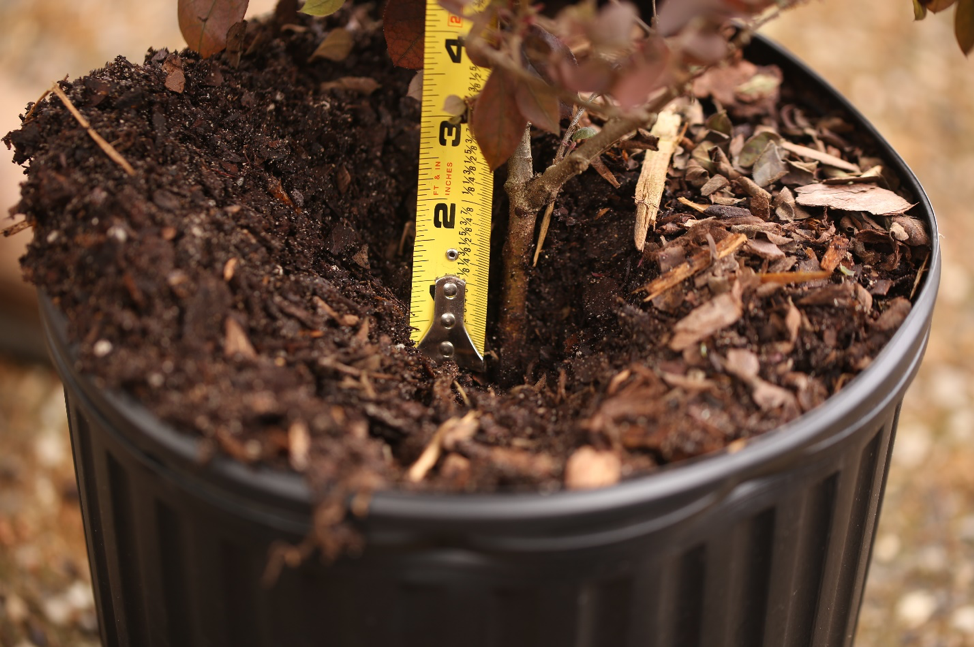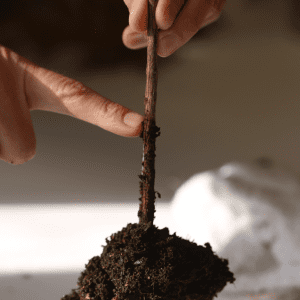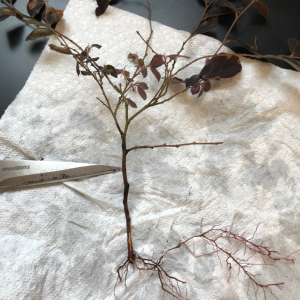Crop Production

Planting container nursery plants at the proper depth is an important factor to their survival. Growers should ensure that their liners are not being potted too deep. Potting machines and other automation have significantly increased the speed of potting crews. However, when faced with a mountain of liners, crews might get a little careless. It is not a bad idea to do a little auditing before things get out of hand.
Problems
Some plant species do not do well when the soil level is raised above a certain point. For example, palm species are notorious for being planted too deep. Often the crown is buried in order to provide some anchorage and allow the plant to stand up. When planted too deep, windmill palms will sit for years without growing.
Some species can develop roots along a buried stem in a container, but many do not. For example, in woody plants, once the tissue reaches a certain age, it is hard for it to transform into something new and sprout these roots. This makes it all the more important to plant at the correct depth.
- John Olive, Director Ornamental Horticulture Research Center
Signs To Look For
It is easy to spot plants that are planted too deep in a landscape. A telltale sign is a lack of a root flare. Often growers will see a hole wallowed out from the wind blowing the plant around. These plants are typically short lived and succumb to disease or blow overs. When it comes to nursery plants, it is much harder to tell if a liner is too deep in a pot.
Plants often count on surface roots for oxygen. Low oxygen in the root zone is stressful on the plant. Problems might be more evident in humid and wet conditions. When the potting mix stays saturated, less oxygen is available for roots. Sometimes planting depth is a sneaky problem and goes undiagnosed because there is no specific symptoms and it often leads to more severe problems.



